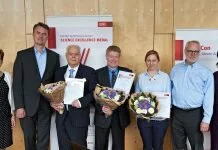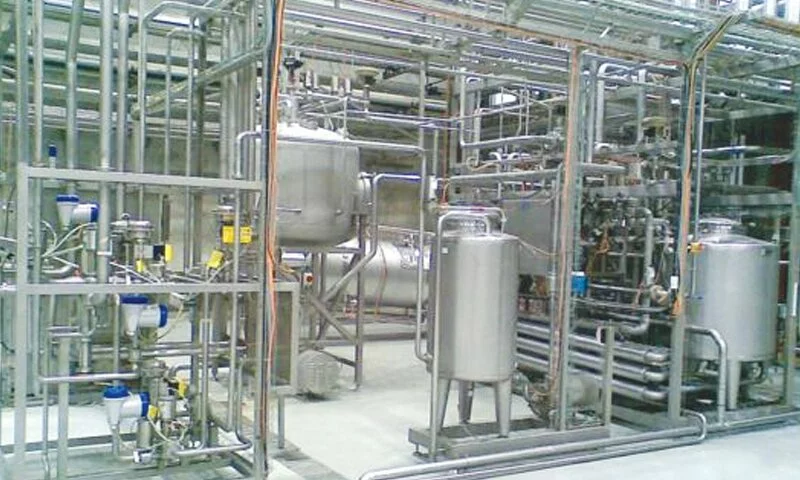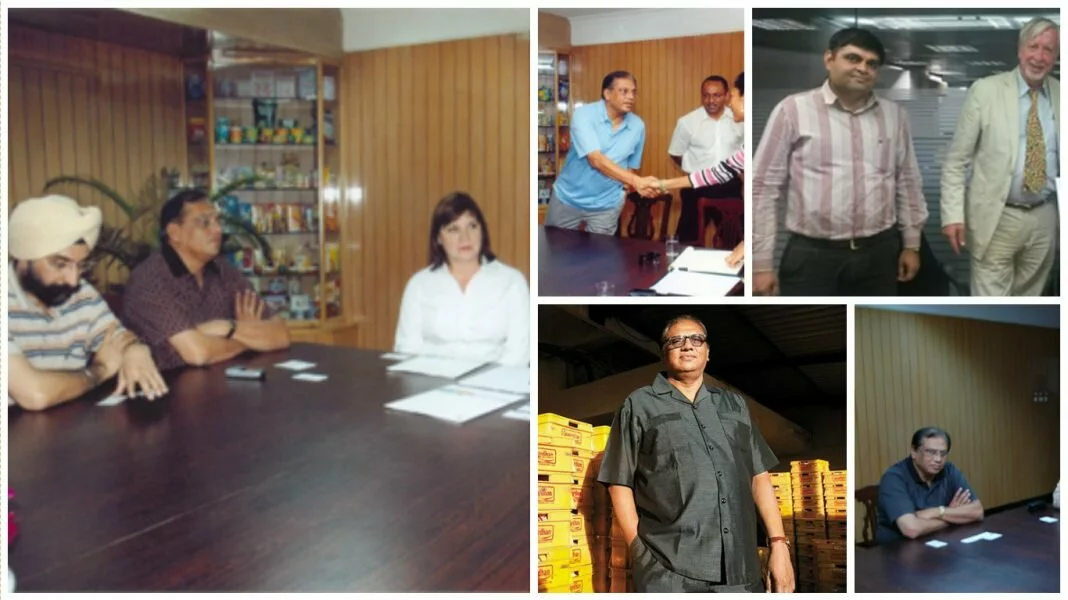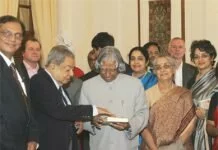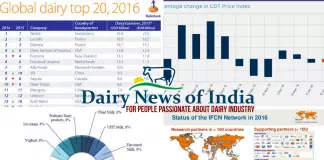Retail Challenges and Transformation at AMUL
During early nineties newspapers in India would carry news items reporting progress on conclusion of GATT negotiations culminating into formation of WTO and it’s repercussion on industry, agriculture and our society as a whole.
Among several areas where liberalization was to happen, one important area was ‘retail’.
Retailing in India, has not been fully liberalized but it is now only a matter of time. Modern format stores are now appearing at an increasing rate and their market share is growing steadily along with their bargaining power viz-a-viz manufacturer, suppliers and distributors. Now they charge more for registration, up-sell/cross-sell displays, shelf positions and schemes to hype sales.
In other parts of the world though, I have read that farmers & especially milk producers have launched several campaigns to regain the bargaining power and chains like Carrefour in France and Marks & Spencerin the UK had to give into their fair price demand. Ultimately retail chains were forced to give higher, fair price to the milk producers without passing the increase to consumers.
Closer home, AMUL came into existence to stop exploitation of farmers by middlemen who would charge higher prices to consumers and not pass a fair price to milk producers. Does this mean that in the current marketplace – a new breed of middlemen are emerging? Such modern retail chains then could consolidate buying power and possibly exploit farmers – particularly with product like which is highly perishable – ‘milk’.
As consumers and as milk producers, what needed to be done to see that we limit their monopolistic tendencies and keep them in check? This was one of our key challenges of the time – to ensure fairness for the farmers & milk producers, who own AMUL.
One of my young officers came up with a proposal in Ahmedabad, India. In his discussions he found that Ahmedabad Urban Development Authority – AUDA, the local council, wanted their gardens maintained by AMUL and in return AUDA would AMUL to put up a retail shop in the garden. The revenue from the shop would contribute and partly, pay for garden maintenance. In turn this could allow AMUL to reach the consumers directly. An opportunity had presented itself and without loosing anytime & sans much planning, we capitalized on the opportunity and built a shop – hired a few temporary staff to run it, arranged the inauguration and invited all local.
Soon we discovered that the daily sales from the one shop were in excess of Rs. 35000 and was growing at a significant rate. After few months it crossed Rs. 75000 a day. The shop was viable and more importantly – the model worked.
At AMUL, we then went about taking over more gardens for maintenance and build more such shops, about 20 or so in the first year – in this symbiotic relationship between Consumers, Producers and AUDA. Very soon – we were then receiving invitations to build shops in many such public locations, which could use this symbiotic maintenance relationship.
Once I happened to visit the National Institute of Design in Ahmedabad and Dr. Darlie O’Koshy, the Executive Director at the institute, offered me space to build a parlor on their campus – to help students get access to a healthier set of milk based products. NID had always been an institution of my liking, more so because Design as a subject has always deeply interested me. Here though, I made a small deviation from the norm and requested that a team from NID be entrusted with the job to design a Retailing Parlour. There was only one key requirement – the parlor should be designed by NID and built on the campus – but it should be replicate across the country.
Within a month we inaugurated NID parlor, and importantly it was viable, designed specifically around our product range and replicable across the country in all locations & climates. The design catered for different times of the day, customer preferences, product groups, storage and modular build for easy setup.
Buoyed by the response and success in the public spaces, I then wrote to all major institutions including IIM, IIT and major universities. To my sheer delight, all of them promptly allowed us to put up a parlor on their campus.
I wrote to Shri. Narayan Murthy, the chairman of Infosys Technologies – to put a parlor in their campuses, explaining the need for better nutrition & lifestyle for the next generation of youngsters. Although I was a little skeptical as it was the first time we were approaching a private business to give us space – Shri. Murthy promptly agreed and personally graced the opening ceremony. As with Infosys and their methodical approach – I soon found out that they would measure customer satisfaction within their campuses from all their employees. The AMUL parlor stood out, it was the most preferred shop after the Infosys shop, in the campus. As the campus grew, we received requests to put up more parlors, which we immediately did –thanks to the rapidly deployable design from NID.
Soon thereafter came a directive that – wherever Infosys put up a new campus AMUL will be given space to put up parlor. It came as a testimony to the quality of products and the commitment of a million milk producing farmers, and hundreds of professionals who made this happen.
When I thanked Shri. Narayan Murthy, he told me “You don’t have to, AMUL is my role model”.
Buoyed by the success, I approached Shri. Azim Premji and he too was kind enough to permit opening of AMUL parlor at their Bangalore campus.
What started as a small experiment to retain a foot hold in the retail market, to ensure better prices for our farmers and direct access to consumers; the very essence why ‘AMUL’ exists, was turning out into a runaway success.
We as a nation are blessed with such high quality of leaders who have a vision to ‘build’ India that is far better, stronger and value based. Whether it was Infosys or IIMs or IITs, everywhere we were welcomed and welcomed for what Amul stands for. Not a single company, organization or department cared for space rentals – it was the essence of the mission, the balance in nutrition and lifestyle alternative – it offered.
Confident from this experience, I sought appointment of Shri Laloo Prasad Yadav – the then Railways minister. Railways were and still are, the lifeline of this country and an opportunity for us to partner and reach out to a wider consumer base, strengthening our objective of opening a parallel retail front.
Though Shri Laloo Prasad Yadav, was returning from tour and had a cabinet meeting to attend, he met our board of directors for about two hours where we discussed our proposal to allow building of one or two Amul parlors, at all railway stations. Next day Dr. Kurien and I met Shri Laloo Prasad Yadav again at his residence and before we said a thing, he told Dr. Kurien, that he would be more than happy to accommodate all our requests – he would support all that Dr. Kurien wants to do!
A man of his words – he did that. He took a policy decision to allow respective state dairy cooperatives to put up parlors on railway stations in their areas and also allowed parlors to Amul wherever possible. Working in close coordination with the railways we could build and run over 200 railway parlors all over India, over and above parlors built by other state cooperatives.
| [AMAZONPRODUCTS asin=”B011NZ4LLE”] |
| [AMAZONPRODUCTS asin=”B01HBEZTSU”] |
| [AMAZONPRODUCTS asin=”B015Z5I4GG”] |
| [AMAZONPRODUCTS asin=”B011NZ4LLE”] |
| [AMAZONPRODUCTS asin=”B01CHV8H5O”] |
| [AMAZONPRODUCTS asin=”9350291495″] |
| [AMAZONPRODUCTS asin=”B01ILV3FGA”] |
Taking this to the next level meant that the effort & involvement had to be widened. We needed to involve & leverage individual members of our entire Organization. In a directive to all our sales offices I reiterated our mission to open such parlors all over India. With active participation of our distributors and we released advertisement in several news dailies inviting proposals. We also designated senior executives in all our sales offices particularly to take up this assignment – which was of strategic importance to our survival in the long term. The whole project was then monitored via a daily monitoring system to check execution of this initiative; and it’s impact on sales.
Most distributors, eager to be part of the next opportunity and equally under threat from modern format stores – complied readily by opening the franchised retail Amul parlor. Soon one could spot an Amul parlor in almost every major town and city of the country – in bus stops, railway stations, educational institutes, airports, malls and residential colonies.
Taking the regular buying experience at our parlor to the next level we encouraged existing and new parlors with significant volume to get them air-conditioned. Having an air-conditioned parlor meant more time spent by the customer at the parlor and increased opportunity to offer a new range of at-parlor products. About 250 new air-conditioned ice-cream scooping parlors were built in cities of Mumbai, Kolkotta, Banglore , Chennai, Hyderabad and other major cities. Similarly at the other end – in our villages we encouraged our dairy cooperative or individual farmer to put up a parlor and sell value added products locally within the villages.
In this entire initiative a very low percentage of the parlors turned out to be unviable and most of that was due to an incorrect location or lack of drive at franchised parlors. Even then the organization helped them sell or shift their equipment to other outlets.
Since 1994 I strived to expand the Amul product range. Milk was launched in 35 metro and big cities (except south India) and UHT milk was made available all over India. On an average every Indian family spends about 18% of disposable income on milk and milk products. If a shop has about 200 middle class consumer family base it can clock a turnover of about Rs. 200,000 a month and on a universe of 10’000 shops – one can post a sales turnover of Rs. 2000 Crores. Today with about 6000 parlors in operation Amul generates a massive sales turnover of over Rs. 500 Cr. However, this is just the beginning of the story as I would envision this number to cross 100,000 parlors across the country and possibly abroad. This would subsequently create sizeable employment within the retail arm and can even cross 300,000 people – similar in size to other sectors such as IT or even Railways.
I have always believed that our true strength is our people. If we can gainfully employ them more as individual businessmen & women, or as entrepreneurs, the harder they work and more satisfaction they derive. Moreover, as organization leaders you can provide them some tools such as access to correct information at the right time, they will go for the goal and out perform any one else in the world. Alternately, in initiatives such as this, I did not insist on any investment in any new IT systems since that can always be done when time is right – the focus must be on proving the concept and accelerating time to market. I often find that small is beautiful and simple is more successful.
With some more experience, leadership and keen effort, reaching Rs. 2000 Cr – Rs. 3000 Cr turnover from the retail arm alone should be possible very soon. The objective to keep the modern format stores in check, ensure fair price for our milk producers can then be realized. With this model, Amul can derive about 30% of the sales through Amul parlors and be in a good bargaining position against the modern format stores.
Thanks to our strategic move in the late nineties, we at Amul enhanced our product range to almost ensure one product for each part of the day for each age group in the family. With this extensive range of products – Amul parlors have a good chance of being viable. The shops sell milk from 6 am to 8 am and then from 8 am to almost unto 4 pm – we have customers purchasing butter, curd or products like flavored milk, butter milk, cheese, paneer etc. 8 pm till late night the shops sell ice-cream and possibly milk for the next morning.
Our objective to draw consumers and make them happy, not only with product and quality but also by being close to them. The outlets today, celebrate local festivals, have personal connect with local residents and are an indispensible part of the local society. This has helped build a strong brand-product-consumer relationship, deep and warm at heart, which no other modern retail format could achieve.
We have a retail format, which doesn’t take customers for granted while being equally reasonable with the milk producers. Both sides being fair to each other and working to serve all stakeholders for progress, ultimately building a strong, healthy and prosperous society.
– B M Vyas
Mr. BM Vyas took-over as Managing Director of AMUL Co-Op. during expansion and opening up of the Indian economy & globalization in the 90s. In order to take on the competition, he championed Total Quality Management across the dairy value chain in Gujarat. Within a span of 16 years at helm of AMUL, he increased sales of AMUL to eight-folds (from Rs. 9.8 billion to Rs. 80 billion). He steered AMUL to be Asia’s largest fresh Milk processor or No. 1 Dairy Brand in India as well as in Asia Pacific, as per Media Magazine Survey, 2009. Under his leadership; AMUL launched innovative and special Dietary products like Probiotic & Sugar Free Ice Cream, Probiotic buttermilk for the first time in India.









